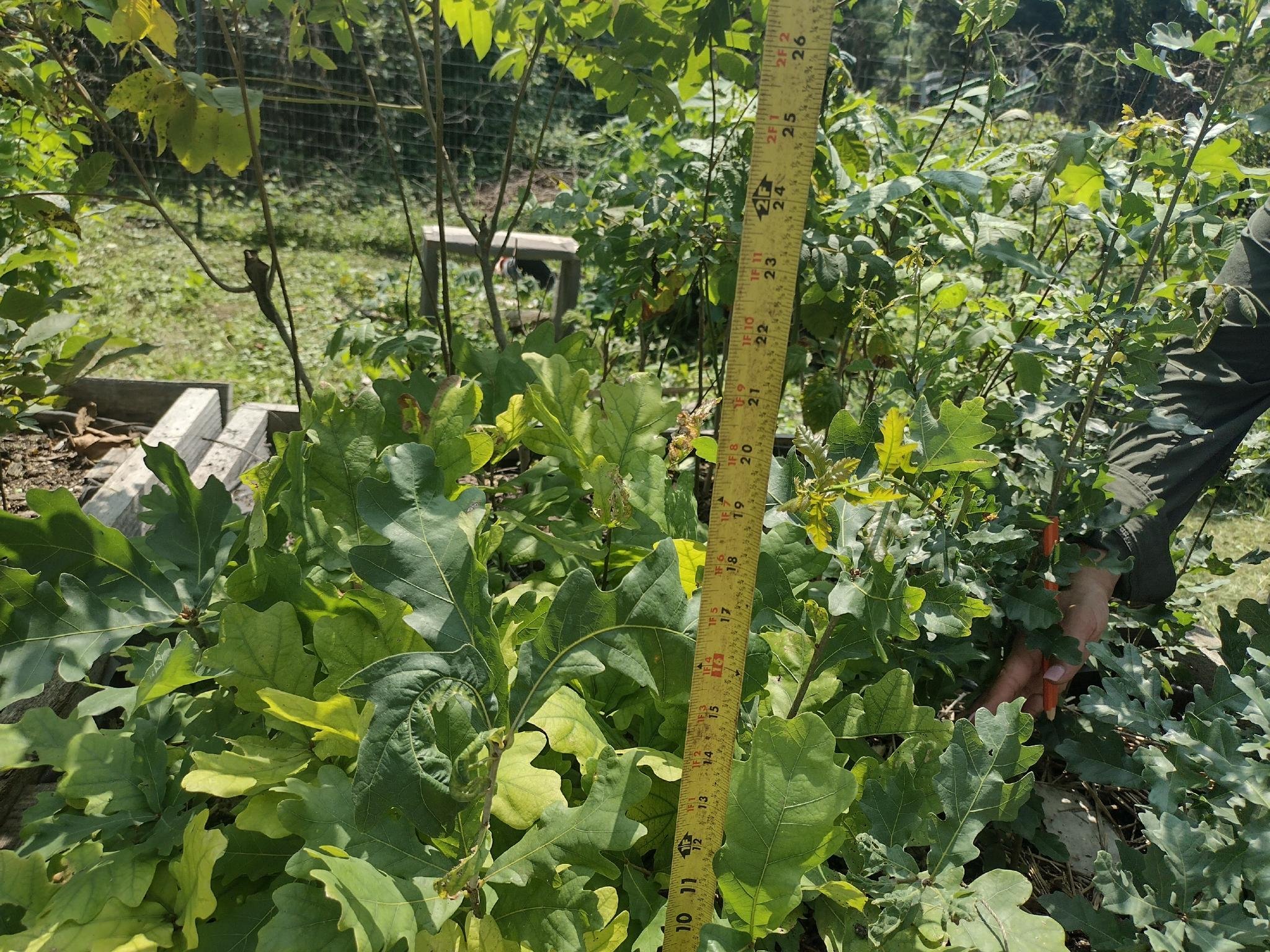White Oak
White Oak (Quercus alba) is one of the predominant tree species in the Eastern U.S. It produces a more palatable nut (acorn) than red oaks. Grown from seed to two years of age. These seedlings are 14" tall with 10" root systems (air pruned).
White Oak (Quercus alba) is one of the predominant tree species in the Eastern U.S. It produces a more palatable nut (acorn) than red oaks. Grown from seed to two years of age. These seedlings are 14" tall with 10" root systems (air pruned).
White Oak (Quercus alba) is one of the predominant tree species in the Eastern U.S. It produces a more palatable nut (acorn) than red oaks. Grown from seed to two years of age. These seedlings are 14" tall with 10" root systems (air pruned).
White Oaks can grow up to 100 feet tall and live for hundreds of years. It's hardwood has many uses including furniture and barrels for wine and whiskey. Oaks have a very high biodiversity value. Doug Tallamy estimates that oaks host more than 500 native species of caterpillars, moths, and butterflies. Its acorns feed birds and mammals including deer. White oak acorns contain less bitter tannin than red oak acorns, meaning that they are more palatable and require less (or no) processing. White oak acorns were a staple of Native American diets throughout the U.S. (let’s bring it back!). Acorns also are an excellent feed for pigs.


